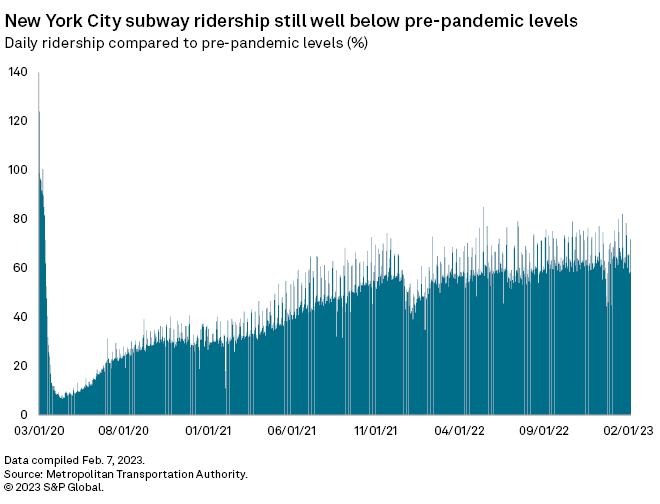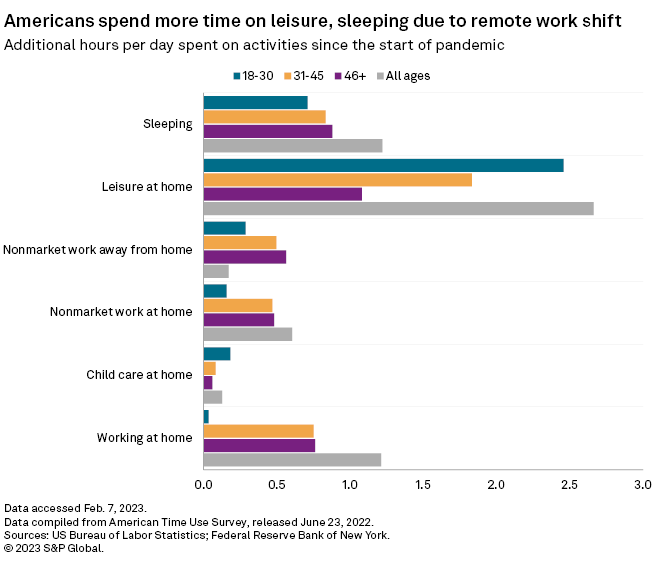Featured Topics
Featured Products
Events
S&P Global Offerings
Featured Topics
Featured Products
Events
S&P Global Offerings
Featured Topics
Featured Products
Events
S&P Global Offerings
Featured Topics
Featured Products
Events
Financial and Market intelligence
Fundamental & Alternative Datasets
Government & Defense
Banking & Capital Markets
Economy & Finance
Energy Transition & Sustainability
Technology & Innovation
Podcasts & Newsletters
Financial and Market intelligence
Fundamental & Alternative Datasets
Government & Defense
Banking & Capital Markets
Economy & Finance
Energy Transition & Sustainability
Technology & Innovation
Podcasts & Newsletters
9 Feb, 2023
Since she started working from home in March 2020, Harriet Ocharo has more time to pursue fitness, something her two-hour round trip journey of buses, trains and walks prevented.
Ocharo, a research scientist based in Tokyo, used part of the time once spent commuting to take up running. The daily runs have not impacted Ocharo's job performance — in fact, she may be working more than ever.
"I am spending more time thinking about work than previously when I would leave my laptop in the office," Ocharo said in an email. "My work is with me all the time, and the separation between my home and work life is not as clear as when I was not working remotely."
Ocharo and other remote workers around the world have saved hundreds of millions of hours by staying home and avoiding daily commutes. But that extra time is leading to many working even later hours than they did when based in an office.

The global shift to remote work, which remains largely in place nearly three years after the pandemic forced it upon many companies, has devastated the commercial real estate industry and the finances of public transit agencies as ridership on subways, trains and buses remains well below pre-COVID-19 levels. It has also raised questions about productivity, as workers now find themselves with more time each week now that they commute less, or not at all.
"This is a permanent shift," said Nicholas Bloom, a Stanford University economics professor and one of the authors of a National Bureau of Economics Research, or NBER, paper on the time savings from remote work.
Extra time
Workers in 27 countries saved an average of 72 minutes daily by avoiding a commute, according to the January NBER paper. Employees working from home saved about two hours per week in 2021 and 2022 and will likely keep an hour per week of those gains after the pandemic ends. Workers are using the extra time to exercise more, learn new languages and for childcare.

Still, they spend much of that extra time working.
Workers are allocating roughly 40% of their time savings to their jobs, 34% to leisure and 11% to caregiving activities.
"These results suggest that much of the time savings flow back to employers," the NBER paper states.

In October 2022, economists with the Federal Reserve Bank of New York released an analysis of government labor data finding that Americans were using the roughly 60 million hours they were collectively saving daily not commuting to their jobs to sleep more and spend more time on leisure activities.
Younger Americans spent more time at social events, eating at restaurants or bars and exercising than they did before the move to remote work. Older Americans, meanwhile, allocated more time to activities like childcare and household chores, the analysis found.

Productivity measures
The analysis also shows that time spent working, overall, has fallen, but this does not necessarily mean that work performance or productivity has fallen.
Stanford's Bloom said worker productivity has been flat or increased since the pandemic.
A 2022 survey by 451 Research found that less than 18% of workers surveyed felt they were less productive than before the pandemic. More than 82% said they were as or more productive than they were before the pandemic.
As views on remote work shift so have views on productivity, said Shane Spraggs, CEO of Virtira, which consults companies on how to improve remote team performance.
Rather than tracking computer keystrokes or time logged online, companies need to focus on new metrics to track worker performance, Spraggs said.
In order to boost productivity, employers need to give employees more flexibility with their time, Spraggs said. This includes limiting or prohibiting emails and other communications outside of work hours, allowing employees to work outside the traditional 9 a.m. to 5 p.m. workday and setting up work based on goals rather than tasks.
"It's giving people back time to live their lives, however they choose that to be," Spraggs said.
This work flexibility is not just an option for many companies, but a necessity as they struggle to fill open jobs and retain workers amid a historically tight labor market. There were nearly two open jobs for every unemployed American in January, according to the latest government data.
Bloom found that employees with current remote work arrangements will not come back into the office full time without a pay increase on average of about 8%. This is in addition to the wage growth that workers are already demanding.
"Companies are doing this because it keeps employees happy and it makes companies money," Bloom said.
Anywhere work
The trend is also forcing companies to rethink how and where work can happen, looking to open more satellite offices outside of city centers that might be more convenient for employees to meet on occasion, for example.
"Work can happen anywhere, team meetings can happen anywhere," said Prithwiraj Choudhury, a Harvard Business School professor who has been studying the productivity effects of geographic mobility of workers for years.
One company, Choudhury said, is opening offices in railway stations, which they believe can save workers travel time when they need to meet in person.
The shift to more remote work will likely force city planners and policymakers to rethink the future of downtown.
"I think commuting to a downtown office building is definitely not going to be the norm going ahead," Choudhury said.
451 Research is part of S&P Global Market Intelligence.